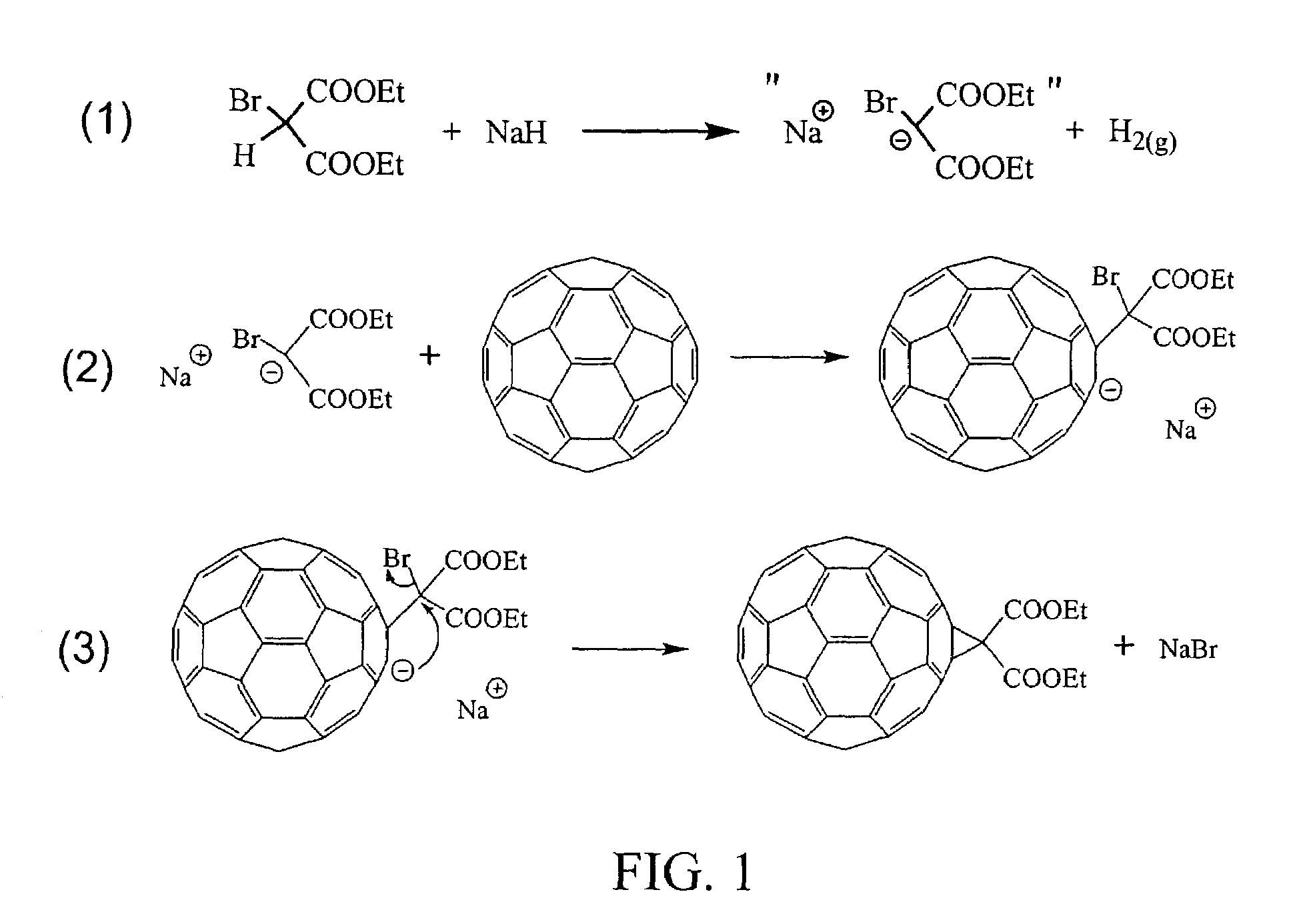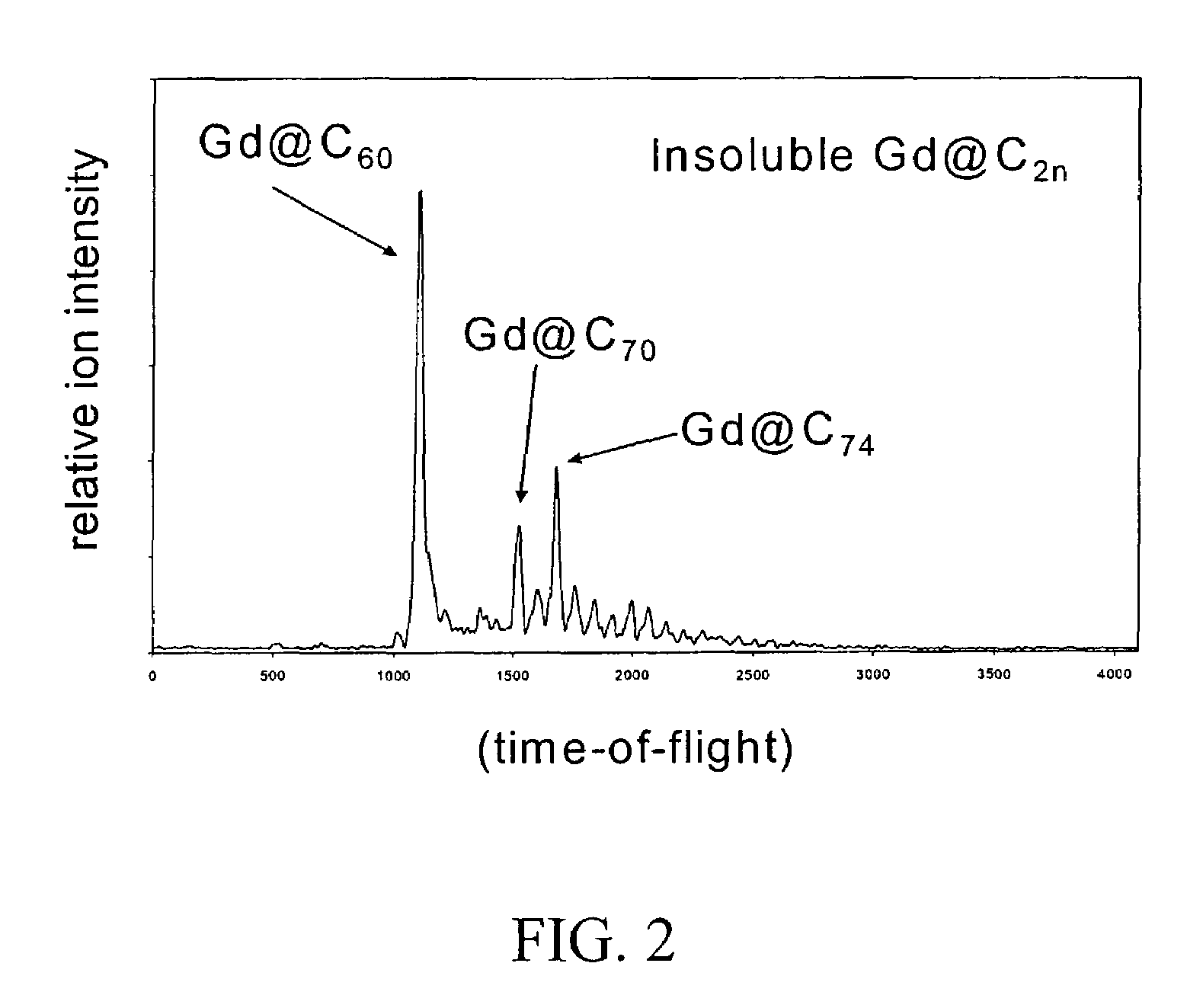Derivatization and solubilization of insoluble classes of fullerenes
a fullerene and insoluble technology, applied in the field of derivatization and solubilization of fullerenes, can solve the problems of inability to remove solvent molecules from bonding to fullerene cages, high separation cost and labor, and release to the exterior, so as to improve the speed or efficiency of derivatization, increase the number of functional groups, and increase the solubility
- Summary
- Abstract
- Description
- Claims
- Application Information
AI Technical Summary
Benefits of technology
Problems solved by technology
Method used
Image
Examples
Embodiment Construction
[0047]The term “fullerene” is used generally herein to refer to any closed cage carbon compound containing both six-and five-member carbon rings independent of size and is intended to include the abundant lower molecular weight C60 and C70 fullerenes, larger known fullerenes including C76, C78, C84 and higher molecular weight fullerenes C2N where N is 50 or more (giant fullerenes) which may be nested and / or multi-concentric fullerenes. The term is intended to include “solvent extractable fullerenes” as that term is understood in the art (generally including the lower molecular weight fullerenes that are soluble in toluene or xylene) and to include higher molecular weight fullerenes that cannot be extracted, including giant fullerenes which can be at least as large as C400. Additional classes of fullerenes include, among others specifically noted herein, endohedral fullerenes containing one or more elements, particularly one or more metal elements, and heterofullerenes in which one o...
PUM
| Property | Measurement | Unit |
|---|---|---|
| dielectric constant | aaaaa | aaaaa |
| dielectric constant | aaaaa | aaaaa |
| band gap | aaaaa | aaaaa |
Abstract
Description
Claims
Application Information
 Login to View More
Login to View More - R&D
- Intellectual Property
- Life Sciences
- Materials
- Tech Scout
- Unparalleled Data Quality
- Higher Quality Content
- 60% Fewer Hallucinations
Browse by: Latest US Patents, China's latest patents, Technical Efficacy Thesaurus, Application Domain, Technology Topic, Popular Technical Reports.
© 2025 PatSnap. All rights reserved.Legal|Privacy policy|Modern Slavery Act Transparency Statement|Sitemap|About US| Contact US: help@patsnap.com



